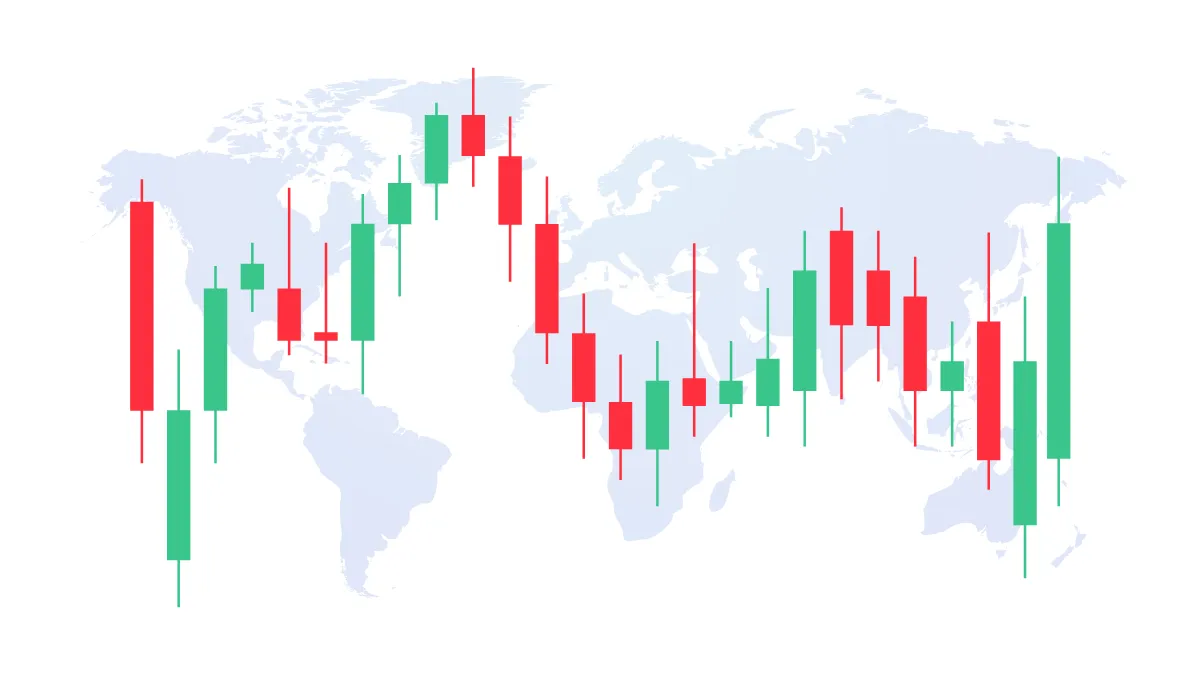Size and Liquidity of the Forex Market
Size of the Forex Market
The Forex market is the world's largest and most active financial market, with a daily trading volume exceeding $7.5 trillion. This massive market encompasses all major global currencies, making it a crucial pillar of the world's economic operation.In comparison, the New York Stock Exchange (NYSE) has an average daily trading volume of about $20 billion; the scale of the Forex market far surpasses that of the stock market.
The trading volume in the Forex market mainly comes from two major types of participants:
- Institutional Investors: Including central banks, hedge funds, large financial institutions, and multinational corporations. They participate in the Forex market for international investment, asset management, or to adjust currency reserves.
- Retail Traders: Individual investors and small traders also participate, but their trading volume only accounts for 3% to 5% of the total market, which is about $200 to $300 billion daily.
Liquidity of the Forex Market
"Liquidity" refers to the volume of trades that can be completed in a short period without significantly affecting the price.The reason the Forex market has extremely high liquidity is due to its vast number of participants and global operation. This means you can easily find a buyer or seller to complete a transaction at any time.
Advantages of High Liquidity
- Low Spreads: Because there are a large number of competing buyers and sellers in the market, Forex brokers can offer smaller bid-ask spreads, which lowers transaction costs.
- Fast Execution: High liquidity ensures that traders can quickly complete trades at their desired prices without delays or price slippage due to a lack of liquidity.
- Market Stability: Although the Forex market is quite volatile, a highly liquid market is better able to absorb large orders without causing an excessive impact on prices.
Global Nature and 24-Hour Operation
The Forex market is characterized by its 24-hour operation, running non-stop from Monday to Friday globally. Unlike the stock market, the Forex market does not rely on a single exchange.The world's major financial centers, such as Tokyo, London, and New York, open in succession, ensuring that trading can take place at any time. This continuous global operation further enhances the market's liquidity.
Phased Market Operation
A day in the Forex market is divided into three main trading sessions:- Asian Session: Includes the Tokyo and Sydney markets, primarily influencing currencies in the Asia-Pacific region.
- European Session: Centered in London, it covers currency trading across many European countries.
- American Session: Dominated by the New York market, it often overlaps with the European session, increasing trading volume and market activity.
Volatility and Risk in the Forex Market
Despite its extremely high liquidity, the Forex market is also accompanied by high volatility, especially during the release of economic data, changes in central bank policies, or due to geopolitical events.This volatility provides traders with ample profit opportunities, but it also increases trading risk. Therefore, risk management is crucial when trading Forex.
Summary
The enormous size and high liquidity of the Forex market make it one of the most important financial markets in the world. With numerous participants and continuous operation, it offers traders unparalleled flexibility and profit opportunities.However, such a market also comes with high risks, requiring traders to operate cautiously and adopt effective risk management strategies.
Hi, We are the Mr.Forex Research Team
Trading requires not just the right mindset, but also useful tools and insights.Here, we focus on Global Broker Reviews, Trading System Setup (MT4 / MT5, EA, VPS), and Forex Trading Basics.
We personally teach you to master the "Operating Manual" of financial markets, building a professional trading environment from scratch.
If you want to move from theory to practice:
- Help share this article to let more traders see the truth.
- Read more articles on Broker Tests and Forex Education.





